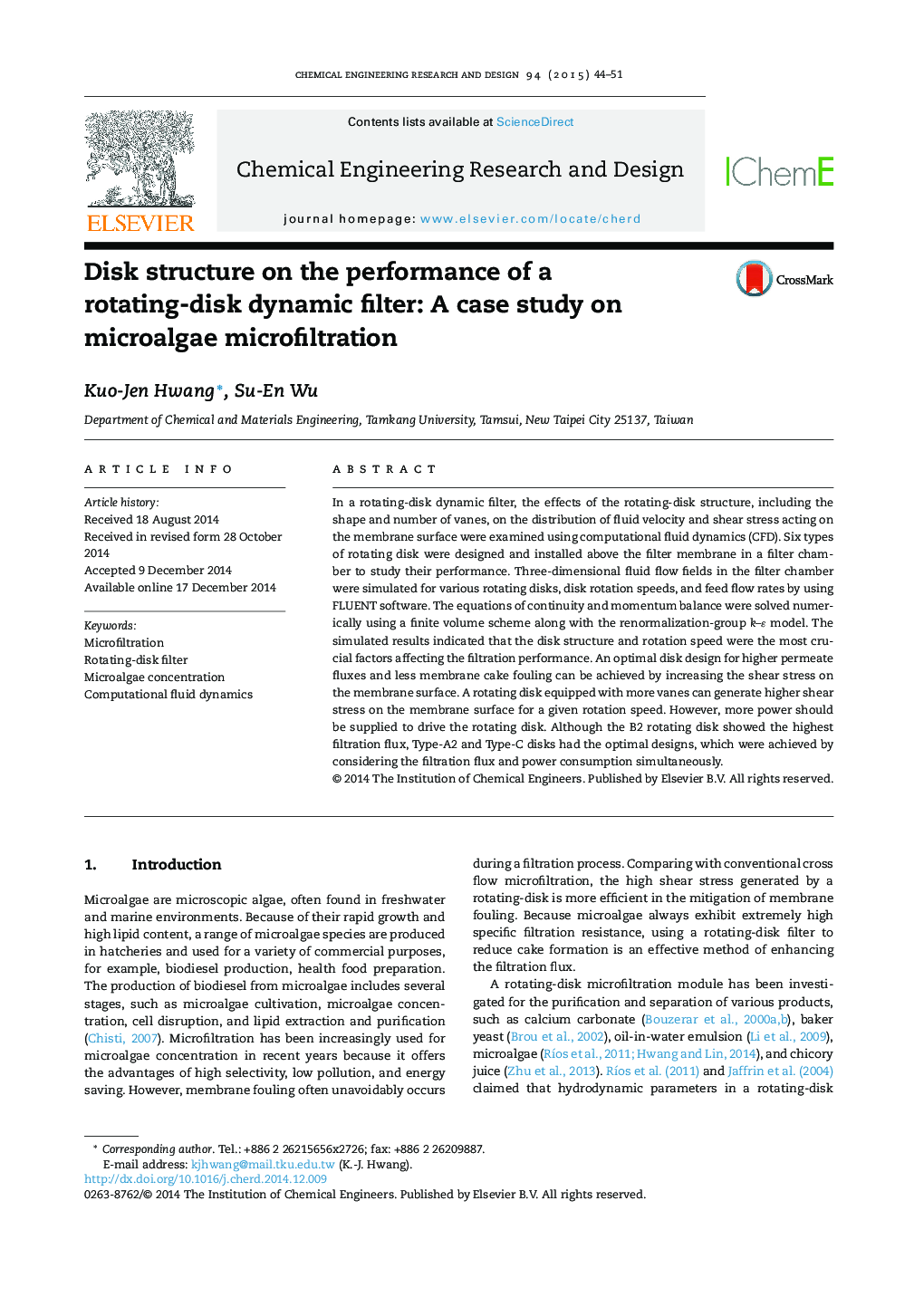| Article ID | Journal | Published Year | Pages | File Type |
|---|---|---|---|---|
| 620488 | Chemical Engineering Research and Design | 2015 | 8 Pages |
•An effective method for filter design and optimizing operation was proposed.•The performances of six types of rotating disks were examined.•Velocity and shear stress distributions were simulated using CFD.•Cake mass and filtration flux were determined under various conditions.•Type-A2 and Type-C disks showed the optimal designs for microalgae concentration.
In a rotating-disk dynamic filter, the effects of the rotating-disk structure, including the shape and number of vanes, on the distribution of fluid velocity and shear stress acting on the membrane surface were examined using computational fluid dynamics (CFD). Six types of rotating disk were designed and installed above the filter membrane in a filter chamber to study their performance. Three-dimensional fluid flow fields in the filter chamber were simulated for various rotating disks, disk rotation speeds, and feed flow rates by using FLUENT software. The equations of continuity and momentum balance were solved numerically using a finite volume scheme along with the renormalization-group k–ɛ model. The simulated results indicated that the disk structure and rotation speed were the most crucial factors affecting the filtration performance. An optimal disk design for higher permeate fluxes and less membrane cake fouling can be achieved by increasing the shear stress on the membrane surface. A rotating disk equipped with more vanes can generate higher shear stress on the membrane surface for a given rotation speed. However, more power should be supplied to drive the rotating disk. Although the B2 rotating disk showed the highest filtration flux, Type-A2 and Type-C disks had the optimal designs, which were achieved by considering the filtration flux and power consumption simultaneously.
Graphical abstractFigure optionsDownload full-size imageDownload high-quality image (169 K)Download as PowerPoint slide
